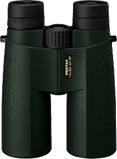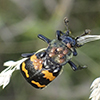Tomentose burying beetle
(Nicrophorus tomentosus)
Conservation • Description • Habitat • Ecology • Distribution • Taxonomy
Conservation Status |
|||
| IUCN Red List | not listed |
||
| NatureServe | NNR - Unranked |
||
| Minnesota | not listed |
||
Description
Tomentose burying beetle is a large, easily recognized beetle. It occurs in the United States and southern Canada east of the Rocky Mountains. Adults are active from June through October. They are found in a wide variety of habitats, including forests, shrubby areas, and open grasslands, apparently showing no preference for any of them.
The adult is 7⁄16″ to ¾″ (11.2 to 19.0 mm) in length. The body is moderately robust, elongate, somewhat flattened, and mostly black. In flight, it strongly resembles a bumble bee. At rest, it does not.
The head and mouth parts are projected forward. The antennae have 11 segments, but the second segment is very small, making it appear that there are only 10 segments. They are abruptly widened (clubbed) at the tip. They are entirely black, including the club. The club is covered with velvety hairs (setae).
The hardened plate covering the thorax (pronotum) is wider than the head, almost square, and entirely black with no orange markings. It is sharply flattened at the edges with broad margins at the sides and a wide margin at the base. It is densely covered with long yellow setae. On the underside, the large rearmost plate on the thorax (metasternum) is also densely covered with long yellow setae. The plate between the wing bases (scutellum) is visible, moderate-sized, and entirely black.
The hardened wing covers (elytra) are truncate, appearing cut off at the tip and exposing 2 or 3 body segments. The lateral margins are folded under. The surface is smooth, not grooved or ridged. On each elytron there are two orange, horizontal bands. The front band is broad. It extends from the lateral margin to the inner margin (suture). The edges are sharply “toothed, as if tattered.” Together, the front bands on both elytra make a continuous band. The suture is narrow, raised, and entirely black. The rear band is narrower and usually also reaches the suture. It is roundly lobed, not sharply toothed. Occasionally the front and rear bands are connected along the lateral margins.
The legs are black. The fourth segment (tibia) on each hind leg is straight, not curved. The end part of each leg (tarsus), corresponding to the foot, has 5 segments. The last segment has two claws at the tip. The claws are simple, not split, and are the same size.
Size
Total length: 7⁄16″ to ¾″ (11.2 to 19.0 mm)
Similar Species
Habitat
Forests, shrubby areas, and open grasslands
Ecology
Season
June to October (CCESR)
Behavior
Unlike other burying beetles, tomentose burying beetle does not bury its prey. Instead, it makes a shallow pit, deposits the carcass, and covers it with litter.
Life Cycle
Third instar larvae overwinter in the soil near the carcass. They pupate the following spring and adults emerge in June.
Larva Food/Hosts
Adult Food
Distribution |
||
|
Sources Biodiversity occurrence data published by: Minnesota Biodiversity Atlas (accessed through the Minnesota Biodiversity Atlas Portal, bellatlas.umn.edu, 10/24/2025). |
|
| 10/24/2025 | ||
Occurrence |
||
Common |
||
Taxonomy
Order
Coleoptera (Beetles)
Suborder
Polyphaga (Water, Rove, Scarab, Long-horned, Leaf, and Snout Beetles)
Infraorder
Staphyliniformia
Superfamily
Staphylinoidea (rove, ant-like stone, and carrion beetles)
Family
Silphidae (rove beetles)
Subfamily
Silphinae (burying and carrion beetles)
Tribe
Nicrophorini
Genus
Nicrophorus (burying beetles)
Subordinate Taxa
Synonyms
Necrophorus marginatus
Necrophorus requiescator
Necrophoru velutinus
Nicrophorus investigator ssp. tomentosus
Common Names
gold-necked carrion beetle
tomentose burying beetle
Glossary
Elytra
The hardened or leathery forewings of beetles used to protect the fragile hindwings, which are used for flying. Singular: elytron.
Pronotum
The exoskeletal plate on the upper side of the first segment of the thorax of an insect.
Scutellum
The exoskeletal plate covering the rearward (posterior) part of the middle segment of the thorax in some insects. In Coleoptera, Hemiptera, and Homoptera, the dorsal, often triangular plate behind the pronotum and between the bases of the front wings. In Diptera, the exoskeletal plate between the abdomen and the thorax.
Seta
A stiff, hair-like process on the outer surface of an organism. In Lepidoptera: A usually rigid bristle- or hair-like outgrowth used to sense touch. In mosses: The stalk supporting a spore-bearing capsule and supplying it with nutrients. Plural: setae. Adjective: setose.
Tarsus
On insects, the last two to five subdivisions of the leg, attached to the tibia; the foot. On spiders, the last segment of the leg. Plural: tarsi.
Tibia
The fourth segment of an insect leg, after the femur and before the tarsus (foot). The fifth segment of a spider leg or palp. Plural: tibiae.
Visitor Photos
Share your photo of this insect.
This button not working for you?
Simply email us at info@MinnesotaSeasons.com.
Attach one or more photos and, if you like, a caption.
Babette Kis |
||
Tomentose Burying Beetle (Nicrophorus tomentosus) Tomentose burying beetle, Nicrophorus tomentosus, with mites. Photographed at Barnes Prairie, Racine Co., WI on September 12, 2023. |
||
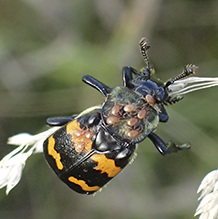 |
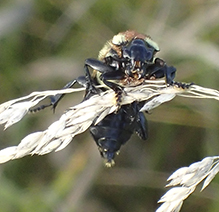 |
|
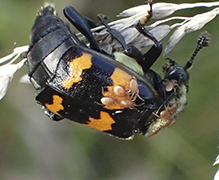 |
||
Kimberly Wittek |
||
Found this courious looking fella wandering around the porch. I came here to find out more about it. Thanks for the info! |
||
 |
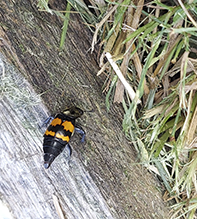 |
|
MinnesotaSeasons.com Photos
|

Slideshows
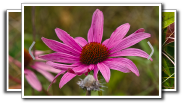
Visitor Videos
Share your video of this insect.
This button not working for you?
Simply email us at info@MinnesotaSeasons.com.
Attach a video, a YouTube link, or a cloud storage link.
Other Videos
Nicrophorus tomentosus
Alison Waddell
Tomentose Burying Beetle (Silphidae: Nicrophorus tomentosus) with Mouse
Carl Barrentine
Gold-necked carrion beetle - Nicrophorus tomentosus
Colin Carmichael

Visitor Sightings
Report a sighting of this insect.
This button not working for you?
Simply email us at info@MinnesotaSeasons.com.
Be sure to include a location.
Kasey Hart
10/23/2025
Location: San Angelo, Texas
Babette Kis
9/12/2023
MinnesotaSeasons.com Sightings
